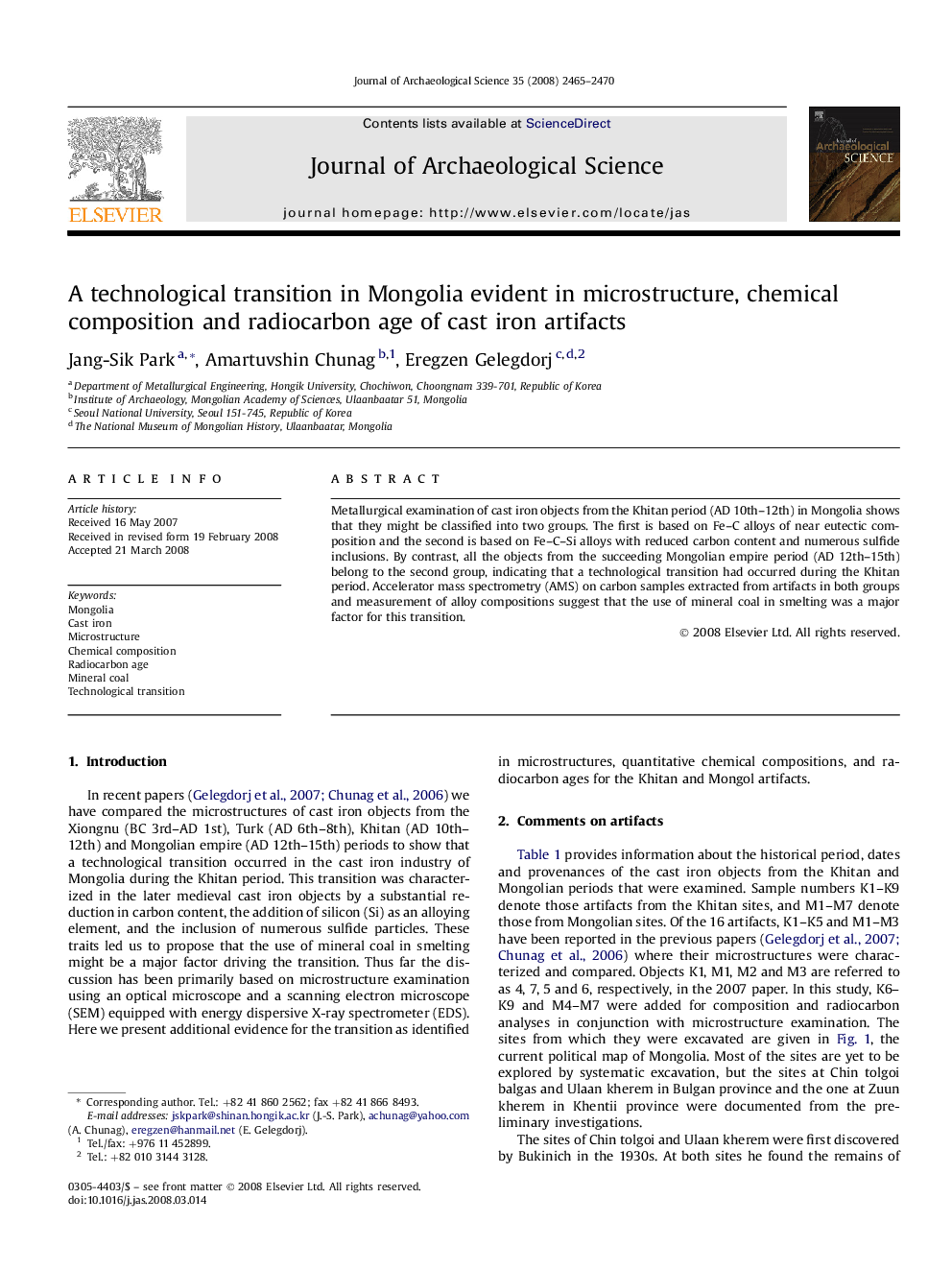| Article ID | Journal | Published Year | Pages | File Type |
|---|---|---|---|---|
| 1037377 | Journal of Archaeological Science | 2008 | 6 Pages |
Abstract
Metallurgical examination of cast iron objects from the Khitan period (AD 10th–12th) in Mongolia shows that they might be classified into two groups. The first is based on Fe–C alloys of near eutectic composition and the second is based on Fe–C–Si alloys with reduced carbon content and numerous sulfide inclusions. By contrast, all the objects from the succeeding Mongolian empire period (AD 12th–15th) belong to the second group, indicating that a technological transition had occurred during the Khitan period. Accelerator mass spectrometry (AMS) on carbon samples extracted from artifacts in both groups and measurement of alloy compositions suggest that the use of mineral coal in smelting was a major factor for this transition.
Keywords
Related Topics
Physical Sciences and Engineering
Materials Science
Materials Science (General)
Authors
Jang-Sik Park, Amartuvshin Chunag, Eregzen Gelegdorj,
